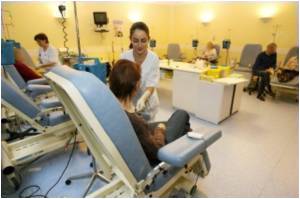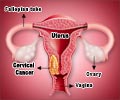A new study published in BMJ finds women previously treated for abnormal cells on the cervix are at a higher risk of developing cervical or vaginal cancer compared with the general female population.

No prior study has investigated how ageing affects the risk of death from cervical cancer after treatment of CIN3. Researchers from Sahlgrenska University Hospital and Karolinska Institute in Sweden therefore aimed to investigate how age affected this risk.
They used data from the Swedish Cancer Registry which contained information on 150,883 women with CIN3, 1,089 of which had a diagnosis of invasive cervical cancer and 147 women who had a diagnosis of vaginal cancer. 302 and 53, respectively, had died of these diseases.
The researchers found there was an increased risk of invasive cervical and invasive vaginal cancer as women once treated for CIN3 grew older. The risk, compared to the general female population, accelerated after the age of 60. After the age of 75, incidence rates increased further with rates exceeding 100 per 100,000 women over this age. Also, the more recently a woman had been treated, the higher the risk of cancer.
There was also an increase in excess risk with age at treatment of CIN3: after adjusting for duration of follow-up and treatment period there was a fivefold increase in risk for treatment at age 60-69 compared with women aged 30-39.
The study covered a total of 3,160,978 women-years and found that there were 355 cause-specific deaths during the study period. There was a steep increase in risk of death with increased age after previous diagnosis of CIN3. This risk was more than doubled after 30 years following treatment, compared with the general population. In women of 72 years of age, death rates has accelerated to 50 per 100,000 women. Death rates also increased with age at treatment.
The researchers do, however, want to reassure patients that "after treatment for CIN3 […] they are well protected from cervical cancer". They say only a minority of those treated will develop cancer and die from the disease and add that women treated have not only been screened and treated, "but can also be assumed to have been followed up more closely (at least for a time) than other women of the same age" and are easily identifiable.
The researchers conclude that the treatment for CIN3 is very beneficial for women with this diagnosis. However the risk of developing cervical or vaginal cancer and of dying from one of these cancers among women previously treated for CIN3 is strongly increased after the age of 60 and 70 respectively, compared to the general female population. They also found that treatment later in life increased this risk and recommend that women "previously treated for CIN3 should be followed up in old age".
In an accompanying editorial, Dr Arbyn from the Unit of Cancer Epidemiology in Brussels says we need to find out why cervical cancer risk increases with age and looks worse for women treated more recently. He says that precancerous lesions which are not clearly visible at colposcopy are more common in older than younger women and that "age-specific immunity may contribute to the ultimate cure of cervical precancer".
He says it is worrying that the study found that women who received treatment more recently were at greater risk of developing cervical and vaginal cancer and that the use of less aggressive treatments and the decreased use of hysterectomy may explain the increase in cervical cancer after treatment of CIN3 observed in recent years in Sweden.
He concludes that research is needed to identify markers that predict a woman's future risk of cancer and that "measures should be taken to assure full compliance with follow-up after treatment of cervical precancer".
Source-Eurekalert















